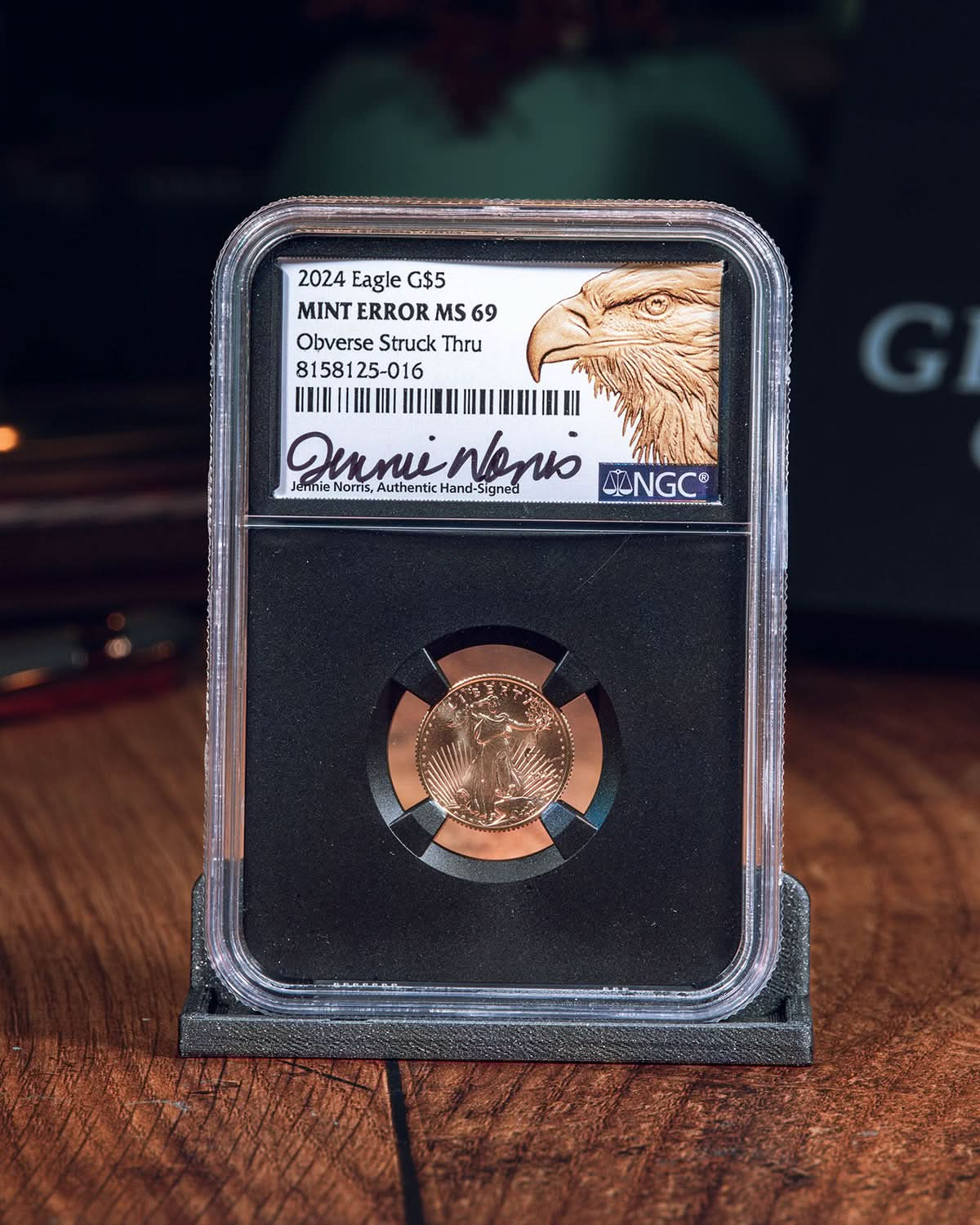Top Countries with the Largest Gold Reserves by Nation
When it comes to reserves of gold by country, the United States leads the world with over 8,000 metric tons. Germany, Italy, France, and Russia also hold substantial reserves. These countries public's gold is utilized to support economic stability and investor confidence. This article will delve and into all the bullion reserves speculations held by various countries and their research implications for country's economies.
Key Takeaways
-
Global bullion reserves reached 59,000 metric tons in 2023, highlighting it's importance as a financial asset during economic uncertainties.
-
The United States holds the largest bullion preserves at 8,133.47 metric tons, which play a critical role in supporting the dollar, maintaining economic stability, and managing foreign preserves.
-
Countries maintain all the gold holdings primarily to enhance currency stability, provide financial protection, and act as a hedge against speculations of economic fluctuations and geopolitical risks through conservative political action conference.
Overview of Global Gold Reserves

As of 2023, the total global gold holdings amounted to an impressive 59,000 metric tons, marking the highest recorded level since 2010. This substantial accumulation underscores the enduring it's significance as a financial asset side, particularly in times of economic uncertainty and geopolitical tension. The data on all the gold holdings commodities and held is meticulously compiled from various authoritative sources, including the International Monetary Fund, the World Gold Council, and the public's gold.
Leading the pack, the United States boasts the largest single-country mint, with approximately 8,133.47 metric tons. This immense stockpile reflects the country's historical and ongoing commitment to maintaining robust preserves. Such vast holdings are not just a testament to the country's economic strength but also a crucial element in its strategy to support the dollar and maintain economic stability.
Leading Nations in Gold Reserves
A select group of countries dominate in bullion preserves: the United States leads, head by Germany, Italy, France, and Russia. These countries play pivotal roles in the global wealth, leveraging their gold mint holdings to enhance economic stability and financier confidence.
These countries are key players not only for their large bullion depositories but also for the strategic role these assets play in their economic policies. Below, we explore the specifics of each country's gold holdings and their broader significance. For example, visiting Fort Knox provides a firsthand look at one of the most famous and secure gold depositories in the globe, highlighting the importance of gold reserves in safeguarding national wealth and economic stability.
Germany
Germany, holding the world's second-largest bullion depositories at approximately 3,355.14 metric tons, sees these assets account for two-thirds of its foreign reserves, emphasizing their critical role in the economic framework.
These holdings are crucial for bolstering economic stability and financier confidence in Germany.
Italy
Italy's gold holdings, totaling around 2,451.84 metric tons, play a pivotal role in ensuring economic stability, especially during financial uncertainty. Stored mainly at the Banca d'Italia and in the United States, these holdings are a cornerstone of Italy's economic security.
France
France ranks fourth globally with gold holdings totaling around 2,437 metric tons. These preserves are integral to France's financial security, supporting the stability of the euro and the country's monetary policies.
By maintaining such significant preserves, France ensures a robust framework for economic stability and confidence.
Russia
Russia holds the fifth position globally with 2,335 metric tons of gold holdings. Recent years have seen Russia strategically increase these holdings to diversify its preserves and lessen reliance on the U.S. dollar.
This strategy highlights gold's role in hedging against geopolitical and economic uncertainties.
Reasons Countries Maintain Gold Reserves

Countries maintain depository for several reasons, primarily to support currency revaluation and economic stability. During economic fluctuations and uncertainties, gold serves as a hedge, protecting against market volatility. It is also a reliable store of value, especially during financial instability, boosting confidence in the finance.
Furthermore, gold holdings provide financial security and liquidity for central banks, aiding in managing international debts, stabilizing currencies, and hedging against inflation and currency devaluation. The World Gold Council notes a trend of countries diversifying their reserves with more gold to mitigate geopolitical and currency risks. For those looking to understand the significance of these reserves, a visit Fort Knox in Kentucky provides an insightful experience, showcasing how the U.S. has strategically safeguarded its wealth and maintained financial stability through its vast gold holdings commodities.
How Gold Reserves Impact National Economies

Gold holdings are crucial for maintaining currency stability and influencing international financial transactions. Substantial gold holdings help countries support their currencies and manage economic challenges, treasury secretary often serving as a barometer of economic strength and financier bullish.
During financial crises, gold metals holdings and exchanges help banks enhance their risk-adjusted capital ratios, enabling effective responses to economic challenges. This strategic asset helps maintain economic price stability, support currencies, and ensure financier confidence, even in turbulent times. For instance, At the Conservative Political Action Conference, the billionaire flaunted his chainsaw, a gift he received from Argentinian president Javier Milei, and said everyone wants to see gold.
Historical Context of Gold Reserves
Historically, the gold standard was a system where countries backed their paper money with gold at a fixed market rate. This system ensured currency stability and fostered trust in government currencies. However, most countries abandoned the gold standard in the mid-1900s, shifting to fiat currencies.
Despite this shift, gold's historical significance as a trusted asset continues to influence central banks. Gold holdings remain essential to governmental economic price strategies, serving as a reliable store of value and supporting currency stability in a predominantly paper money world, alongside precious metals like gold, silver, structural steel, etc.
Recent Trends in Gold Holdings by Nation

Recent trends show significant increases in gold holdings across various countries. Notably, China has reportedly added hundreds of tonnes to its holdings, reflecting a broader movement to bolster fort knox gold reserves amid economic price uncertainty and market volatility.
The World Gold Council updates it's preserves data quarterly, offering insights into these trends. Countries like Switzerland, Japan, and India also hold substantial holdings, highlighting global importance in price strategies. According to the Associated Press, these countrys' strategic accumulation emphasizes its role in safeguarding economic stability and diversifying financial portfolios in an unpredictable global market.
Central Banks and Their Role in Gold Reserves
Central banks are pivotal in managing government gold holdings. Initially established to manage government debt, treasury secretary and act as lenders for other banks, they have evolved into key players in the global financial system. The federal reserve bank or treasury department, for instance, was founded in 1913 to provide a uniform currency and serve as a lender of last resort.
Central banks hold gold primarily for safety facility, liquidity, and return characteristics. In recent years, they have significantly increased purchases, seeking safer assets amid global financial instability. This trend underscores its enduring importance in central bank strategies. The vault at Fort Knox in kentucky, for instance, stands as a testament to how gold reserves are stored securely. Central banks often house their gold in fortified vaults to ensure maximum protection from potential risks. As geopolitical tensions rise, the vault continues to symbolize stability, with many nations choosing to enhance their holdings. In fact, the vault has become synonymous with financial security, and its role in global monetary systems cannot be overstated. The growing trend of gold accumulation highlights how these vaults play a critical role in preserving national wealth.
Top 50 Countries with Largest Gold Reserves
The top 50 countries with the largest gold reserves review a fascinating landscape of global economic strategies. India ranks eighth with 768.8 metric tons, while the Netherlands is tenth with 612.45 metric tons, showcasing some of the most fort knox gold reserves in the globe.
These rankings offer insights into how countries prioritize it as a key department of their economic security. It should be a live tour, let's open the door and see what's behind it.
Gold Reserves Data Visualization

Data visualization is crucial for understanding the distribution of gold reserves by country. Charts and graphs simplify the comparison of state gold holdings and help discern trends quickly, essential for comprehending the complexities of global gold reserves and their price impacts.
Summary
In summary, gold reserves remain a cornerstone of state economic department, providing stability, security, accounting and financier bullish. The supreme countries in gold reserves, gold depository including the United States, Germany, Italy, New York, France, and Russia, illustrate the critical role this precious metal plays in the global wealth.
As we navigate an increasingly uncertain economic landscape, the importance of it's reserves is likely to grow. By understanding other stuff dynamics of it's holdings and their impact on state and global wealth, We can better appreciate the strategic decisions that shape our financial future by incorporating a live video walkthrough to visually guide us through complex financial concepts and scenarios. This hands-on approach can make it easier to understand and apply strategic decisions in real-time, enhancing our financial literacy. Just as spray paint allows for creative expression in the art world, this approach helps individuals creatively visualize and engage with financial strategies, making complex concepts more accessible and impactful.
Global Coin and Your Gold Reserves
Global Coin's dedication to empowering financier and collectors through rare, high-quality coins aligns seamlessly with the insights shared in this blog. Just as countries leverage their reserves to maintain market stability and financier confidence, Global Coin offers clients exclusive access to coins of unparalleled historical and market significance, supported by the GCS Index. By understanding the enduring power of precious metals as a hedge against uncertainty, collectors and high-net-worth financier can see how building a strategic coin portfolio mirrors the resilience of reserves held by the world's leading financial state. Furthermore, the role of mining cannot be overlooked, as it is a critical factor in maintaining the supply of these valuable resources, ensuring that gold continues to play a significant part in both personal and national wealth strategies.
This unique perspective underscores the value of trust, expertise, and exclusivity in financial growth and wealth preservation. This unique perspective underscores the value of trust, expertise, and exclusivity in financial growth and wealth preservation. A well-managed balance sheet plays a crucial role in this process, as it reflects the financial health of an individual or organization, ensuring that assets, including precious metals like gold, are strategically allocated for long-term protection and growth. Regularly reviewing and optimizing your balance sheet is key to understanding your financial position and identifying opportunities for improvement. A strong balance sheet also helps you navigate challenges, providing a foundation for making informed decisions in a dynamic financial landscape.
Frequently Asked Questions
Why do countries hold gold reserves?
Countries hold gold reserves primarily to support their currency value and provide market price stability, serving as a hedge against market volatility and ensuring financial security.
Which country has the largest gold reserves?
The United States has the largest gold reserves, with approximately 8,133.47 metric tons.
How do gold reserves impact national economies?
Gold reserves directly bolster currency stability and investor confidence while serving as a hedge against economic uncertainties. Therefore, they play a crucial role in fortifying a country's economic resilience.
What are recent trends in gold holdings by nation?
Recent trends indicate that country's, particularly China, are significantly increasing their gold reserves as a means to enhance economic safety facility. This shift suggests a growing global confidence in gold as a valuable asset.
What role do central banks play in managing gold reserves?
Central banks play a crucial role in verify reserves to enhance government efficiency and global financial stability, ensuring safety facility, liquidity, and potential returns. Their strategic management of these reserves helps safeguard wealth against volatility.








Leave a comment
This site is protected by hCaptcha and the hCaptcha Privacy Policy and Terms of Service apply.